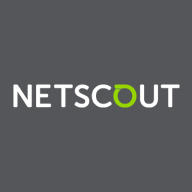

Nagios XI and TruView are competitors in the network monitoring and management space. Despite both offering strong capabilities, TruView seems to have the upper hand with advanced features that provide deeper network insights.
Features: Nagios XI offers customizable alerts, an extensive plugin library, and robust monitoring capabilities, making it suitable for diverse IT infrastructures. TruView provides comprehensive network analysis tools, superior visibility into network performance, and advanced features offer detailed insight into network issues.
Room for Improvement: Nagios XI could enhance its real-time analysis and offer more intuitive interfaces and integration with third-party systems. TruView might improve by streamlining the setup process, reducing its cost, and enhancing its learning curve for new users.
Ease of Deployment and Customer Service: Nagios XI is straightforward to deploy, appreciated for its simplicity and efficient customer service. TruView has an integrated deployment approach and provides real-time performance insights with responsive support. Nagios XI's simpler deployment contrasts TruView's more complex setup, offering advantages based on user preferences.
Pricing and ROI: Nagios XI is affordable and offers a clear return on investment due to low initial setup costs. TruView, with higher setup costs, delivers substantial ROI attributed to its extensive feature set. Although Nagios XI is budget-friendly, TruView justifies its higher cost through advanced functionalities, preferred for detailed network analysis.
| Product | Market Share (%) |
|---|---|
| Nagios XI | 3.1% |
| TruView | 0.2% |
| Other | 96.7% |

| Company Size | Count |
|---|---|
| Small Business | 22 |
| Midsize Enterprise | 17 |
| Large Enterprise | 21 |
| Company Size | Count |
|---|---|
| Small Business | 7 |
| Midsize Enterprise | 6 |
| Large Enterprise | 7 |
Nagios XI provides monitoring of all mission-critical infrastructure components, including applications, services, operating systems, network protocols, systems metrics, and network infrastructure. Third-party add-ons provide tools for monitoring virtually all in-house and external applications, services, and systems.
Nagios XI uses a powerful Core 4 monitoring engine that provides users with the highest levels of server monitoring performance. This high degree of performance enables nearly limitless scalability and monitoring powers.
With Nagios XI, stakeholders can check up on their infrastructure status using the role-based web interface. Sophisticated dashboards enable access to monitoring information and third-party data. Administrators can easily set up permissions so users can only access the infrastructure they are authorized to view.
Nagios XI Benefits and Features
Some of the benefits and top features of using Nagios XI include:
Reviews from Real Users
Nagios XI stands out among its competitors for a number of reasons. Several major ones are its integration options and monitoring abilities, as well as its alerting features.
David P., a senior DevOps engineer at EML Payments Ltd, writes, “We use Nagios as a network discovery tool. We use Nagios to maintain our uptime statistics and to monitor our services. It has allowed us to be much more sophisticated in our monitoring and alerting.”
An IT-OSS manager at a comms service provider notes, “Nagios XI has a custom API feature, and we can expose custom APIs for our integration. This is a great feature.”
Visual TruView by Fluke Networks is a unified solution for Application Aware Network Performance Management (AANPM). TruView embeds the most important data sources such as packet, transaction, NetFlow/IPFIX, and SNMP to present analytics in a time-correlated single dashboard view. These correlated views help you quickly see how well the infrastructure is transporting applications and how well those applications are performing in the context of end-user experience. And, TruView’s integrated 10 Gbps full line rate stream-to-disk packet capture ensures you’ll never miss an important event again.
We monitor all Network Monitoring Software reviews to prevent fraudulent reviews and keep review quality high. We do not post reviews by company employees or direct competitors. We validate each review for authenticity via cross-reference with LinkedIn, and personal follow-up with the reviewer when necessary.